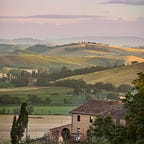Expose-To-The-Right (But Watch That Histogram)
What is E-T-T-R
E-T-T-R (Expose-To-The-Right) is a photography technique in which the camera sensor is exposed to more light than is needed for an optimal exposure. When done correctly, it yields better noise performance.
Why E-T-T-R
Most scenes captured by a camera have elements that are bright and those that are dark. The bright areas are the ones that reflect more light and the dark areas are the ones that reflect less light. In addition, there is random noise that is always there and happens to be more visible in the dark areas as compared to the light areas.
As the light incident on the camera’s sensor increases, so does the noise but not proportionally. The result is that the signal-to-noise ratio for bright areas is much better than that of the dark areas.
To make things worse, it also just so happens that the human eye is a lot more sensitive to details in the darker areas. So not only will there be more noise in the dark areas but our eyes will seek out that noise!
But don’t worry, E-T-T-R saves the day. Just capture more light than is needed so that those dark areas look brighter to the sensor, resulting in improved signal-to-noise ratio. Dial the exposure back to normal in post-processing. The result is an image that has more detail in the dark areas but with less noise.
When (not) to E-T-T-R
E-T-T-R can’t be used when the Dynamic Range of the scene is high and brightening the image will cause a loss of highlight detail. Also, for cameras with very high quality sensors, the gains might be minimal.
How to E-T-T-R
In manual mode, allow more light in by opening the aperture or slowing down the shutter. In other modes, use positive Exposure Compensation.
Watch out .. that histogram is a pack of lies!
I’m assuming that the people who practice this technique are most likely shooting in RAW. I’m also assuming that they will utilize the histogram to monitor the exposure. The problem is that the histogram on most cameras (as far as I know) is not based on the RAW image data but the JPEG preview of that image data. Depending on settings for how that JPEG is generated — and there are many — that histogram may not be very accurate. Consequently it may be possible to push the exposure to the right — with significant loss of detail — without knowing it.
The two ways, that I know of, to address this are (1) neutralize/disable JPEG processing as much as possible in the camera settings so that the histogram is as a close to the RAW histogram as possible and (2) experimentally determine the number of stops of compensation that can be added safely by taking a set of photos while incrementally increasing exposure, importing into the RAW processor and examining the histogram to find the point at which highlights get blown out. This needs to be done only once. The advantage of (2) over (1) is that the latter may degrade the quality of the in-camera previews.
Some RAW processors, such as Lightroom and Adobe Camera RAW, add profiles on top of the RAW data prior to generating histograms. Purists may want to use a true RAW histogram tool for best results.
E-T-T-R is a valuable tool for photographers to maximize the noise performance of their images. As sensor technology continues improves, we not be far from a day when it is no longer needed. Until then, E-T-T-R away! (but watch that histogram)
